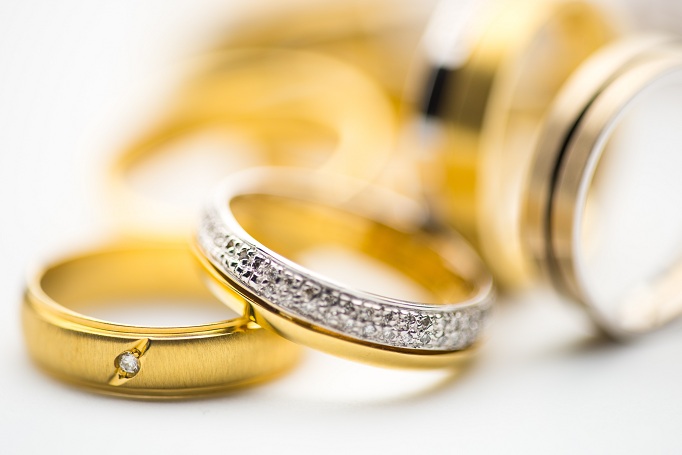How good are you at spotting a fake? Some people just have an eye for jewelry, identifying gems and metals as they walk by them. Others have a more difficult time picking out the real thing, which can lead to getting taken advantage of. Fortunately, there are a few tricks you can try to get more familiar with the properties of genuine gold, silver, and diamonds.

- Inspect for markings.
Check for any markings that might indicate what kind of metal it is. A lot of genuine silver will contain a small “.925” marking. It might also have a mark that plainly reads “sterling” or “ss”. Gold, on the other hand, might bear an imprint indicating the karat. Look for marks that resemble 10K, 14K, 18K, and so on.
- Check the reflection.
If you want a better idea as to whether or not a diamond may be real at a glance, try this. Look down into the alleged diamond, and note what color the reflections coming from the cut of the stone are. Are they silvery gray, or more a spectrum of color, like a rainbow? Silvery tones are more indicative of the real thing, as are more sparkles than reflections.
- Can it be polished clean?
There’s a very good reason we consider sterling silver to be so timeless. No matter how dark or grimy it gets, it can nearly always be restored to its former glory. After all, silver is a very popular precious metal to pass down via heirloom pieces, like flatware and candelabras. If a piece appears tarnished, but the stain cannot be buffed away with silver polish, it probably isn’t real silver.
- Perform a density test.
If there’s a bit of money at stake, go ahead and take the piece for metal testing. But if you just want to see if a small piece is real gold, you can always try a density test. Weigh the piece in grams, and drop it in a small container of water that bears measurement markings. Record the water measurement before and after the jewelry has been submerged. Figure out the difference between these, and divide the mass by that number. Now see how the density compares to pure gold, which is around 19 grams per cubic centimeter.
- Try a magnet on metals.
Gold and silver are not magnetic, while many less precious metals are, like nickel and steel alloys. People who seek out bargains at flea markets, estate sales, and thrift stores try a magnet test all the time. That said, there are other nonmagnetic metals that can be used to fool you.
- Does it shine? Or does it glow?
This one requires a keen eye, so your mileage may vary. Inspect your alleged gold or silver and think critically about the finish. If it looks high-shine, like it’s lacquered, there’s less of a chance that it’s real. If it glows softly, it might be authentic.
Ultimately, your best course of action is to see a jeweler or appraiser. Never rely on imprecise methods to determine a piece’s true value. It’s best to leave any unscientific tests for times when you just want to get a little closer to determining the authenticity of pieces already in your collection.






